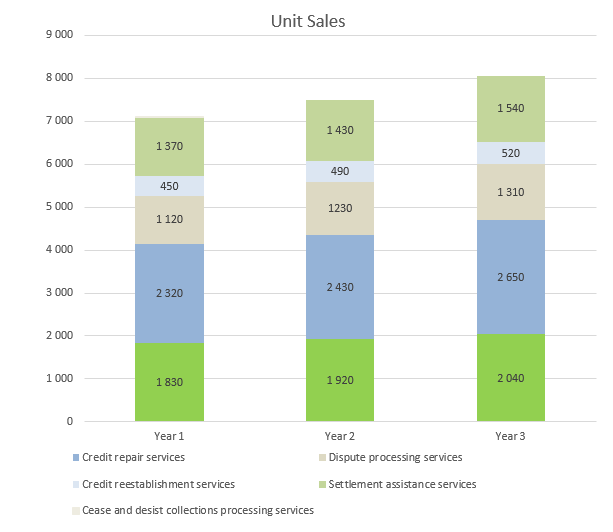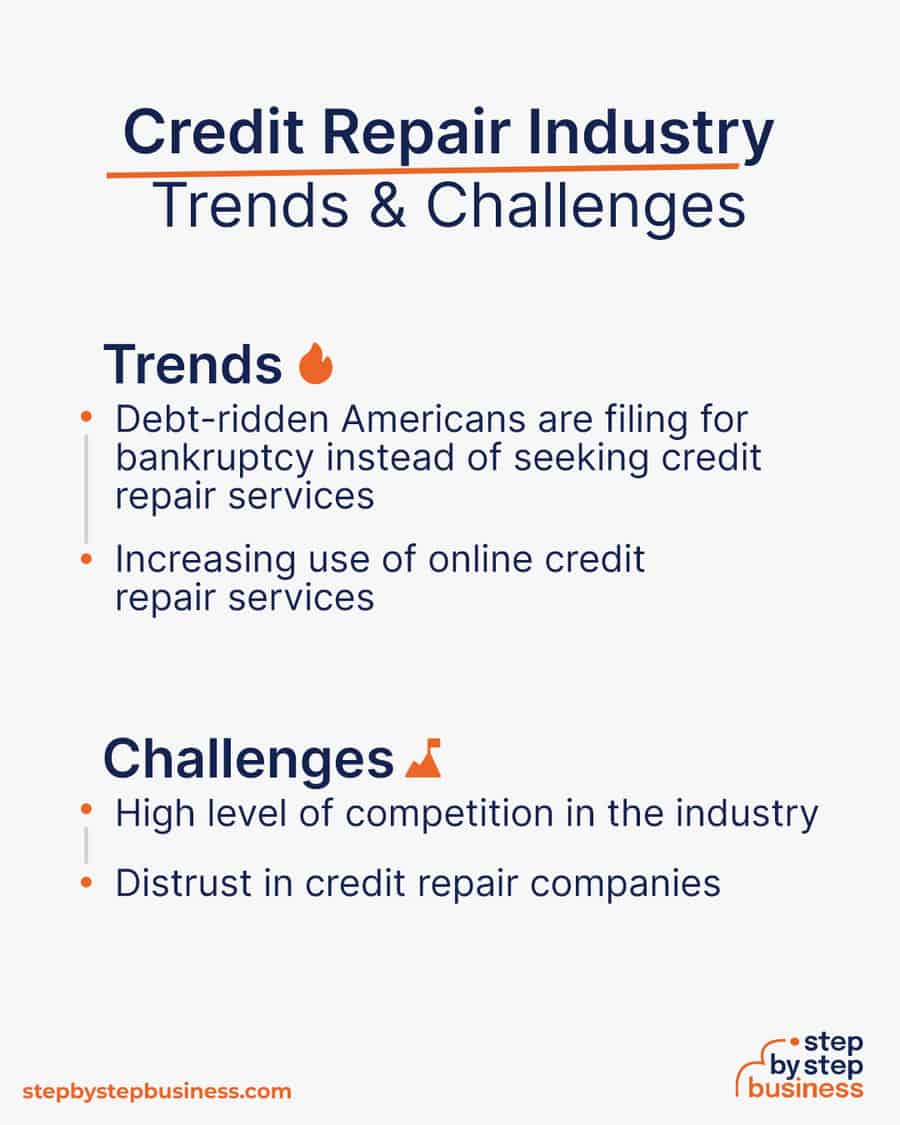You. Yes, you. Are you tired of being trapped in a financial nightmare? Are you sick and tired of being denied loans or paying ridiculously high interest rates? Well, it’s time to take matters into your own hands. The solution lies in credit repair. With our comprehensive and strategic credit repair business plans, you can finally break free from the chains of bad credit and pave a path towards financial freedom. Don’t waste any more time drowning in debt and despair. It’s time to take control and rebuild your creditworthiness.

This image is property of www.scoreceo.com.
Understanding The Credit Repair Industry
The role of credit repair businesses
The credit repair industry plays a vital role in helping individuals and businesses improve their credit scores and navigate the complex world of credit. Credit repair businesses act as intermediaries between clients and credit bureaus, working to dispute inaccuracies, negotiate settlements, and provide guidance on improving creditworthiness. These businesses are essential in assisting clients in achieving their financial goals and accessing better lending opportunities.
The market size and scope of credit repair industry
In recent years, the credit repair industry has experienced significant growth, with an increasing number of individuals and businesses seeking assistance. The market size of the industry is substantial, as more people recognize the importance of good credit and the impact it has on their financial well-being. The scope of the credit repair industry extends across various demographics, from individuals looking to improve their credit for personal purposes to businesses aiming to establish better credibility with lenders and suppliers.
Current trends in the credit repair industry
It is essential for credit repair businesses to stay updated with the current trends in the industry to remain competitive and meet evolving client needs. One major trend is the increasing emphasis on technology and automation. Many credit repair businesses are investing in advanced software solutions to streamline their processes, improve efficiency, and offer clients a seamless experience. Additionally, there is a growing focus on providing education and financial literacy resources to empower clients to take control of their credit and make informed financial decisions.
Key challenges faced by credit repair businesses
Credit repair businesses face several challenges in their operations. One major hurdle is dealing with the complexity of credit reporting and regulations. Navigating through the intricacies of credit laws and regulations can be time-consuming and requires meticulous attention to detail. Additionally, there may be instances where credit repair businesses encounter resistance from credit bureaus or face legal issues, necessitating the need for experienced legal counsel. Building trust and credibility in a saturated market and managing client expectations are also ongoing challenges that credit repair businesses need to address to thrive in the industry.
Important Aspects Of A Credit Repair Business Plan
Identifying the business’s unique selling proposition
To stand out in the competitive credit repair industry, it is crucial for a business to determine its unique selling proposition (USP). This is the key factor that sets the business apart from its competitors and attracts clients. Whether it’s specialized expertise in a particular niche, a customer-centric approach, or innovative technology solutions, clearly defining the USP will help shape the business’s branding, marketing, and overall strategy.
Determining target demographics
Understanding the target demographics is essential for effective marketing and business development. Different demographics may have varying credit repair needs, priorities, and communication preferences. Conducting market research and analysis will aid in identifying the specific groups that the credit repair business will focus on. By tailoring services and marketing efforts towards these demographics, the business can maximize its impact and generate a higher return on investment.
Estimating initial setup costs
Starting a credit repair business requires careful financial planning to ensure a smooth launch. Estimating the initial setup costs involves considering various factors such as office space, equipment, software, employee salaries, marketing expenses, and legal fees. By creating a comprehensive budget, businesses can have a clear understanding of the financial resources required and plan accordingly to secure the necessary funding.
Setting pricing strategies and revenue models
Determining pricing strategies and revenue models is crucial to maintain profitability and sustain the business in the long run. Credit repair businesses can adopt different pricing structures, including one-time fees, monthly retainers, or performance-based pricing. It is important to assess the market rates, competitor pricing, and the value provided to clients when deciding on the appropriate pricing model. Regular assessment and adjustment of pricing strategies will help ensure that the business remains competitive while generating sufficient revenue.
Creating a marketing and sales strategy
A solid marketing and sales strategy is vital for attracting clients and building a strong customer base. This includes developing a well-defined brand identity that resonates with the target market, choosing effective marketing channels to reach potential clients, and crafting compelling messaging to clearly communicate the business’s value proposition. Utilizing digital marketing techniques, such as search engine optimization, social media marketing, and content marketing, can help credit repair businesses increase their online visibility and reach a wider audience.
Risk management and contingency planning
Risk management and contingency planning are essential elements of any business plan, including credit repair businesses. Identifying potential risks, such as legal disputes, regulatory changes, or reputational issues, allows the business to proactively develop strategies to mitigate these risks. Creating contingency plans that outline alternative courses of action in case of unexpected events or emergencies will help ensure the business’s continuity and resilience.
Business Structure And Legal Considerations
Choosing a business structure for the credit repair company
Selecting the appropriate business structure is a key decision that affects the legal, financial, and operational aspects of the credit repair business. Common options include sole proprietorship, partnership, limited liability company (LLC), or corporation. Each structure has different implications for taxes, liability, ownership, and compliance requirements. Consulting with a business attorney or accountant can help make an informed decision based on the specific needs and goals of the credit repair business.
Understanding legal aspects related to credit repair
Credit repair businesses must have a thorough understanding of the legal aspects related to their operations. This includes familiarizing themselves with laws such as the Fair Credit Reporting Act (FCRA), Fair Debt Collection Practices Act (FDCPA), and the Credit Repair Organizations Act (CROA). Compliance with these laws is crucial to protect the business from legal issues, maintain ethical practices, and avoid potential penalties or sanctions.
The role of state regulations and federal laws in credit repair
In addition to federal laws, credit repair businesses must also navigate state regulations that govern credit repair practices. Each state may have specific licensing and bonding requirements, disclosures, and restrictions on advertising. Understanding and adhering to these regulations is essential to ensure the business operates within the legal framework and maintains a good reputation within the industry.
Insurance considerations for a credit repair business
Obtaining appropriate insurance coverage is a critical aspect of risk management for credit repair businesses. General liability insurance, professional liability insurance (commonly known as errors and omissions insurance), and cyber liability insurance are examples of insurance types that may be necessary to protect against potential risks and claims. Consulting with an insurance professional can help identify the specific insurance needs based on the business’s operations and potential exposures.
SWOT Analysis For A Credit Repair Business
Identifying strengths of your credit repair business
Conducting a SWOT (strengths, weaknesses, opportunities, threats) analysis allows credit repair businesses to assess their internal strengths objectively. This includes evaluating factors such as expertise, resources, reputation, technology infrastructure, and any unique competitive advantages. Identifying strengths helps the business understand its unique selling points and leverage them to differentiate itself in the market.
Highlighting weaknesses and areas for improvement
Recognizing weaknesses and areas for improvement is crucial for credit repair businesses to enhance their operations and overall effectiveness. This may include identifying limitations in expertise, outdated technology systems, inefficient processes, or gaps in regulatory compliance. Addressing these areas can help fortify the business’s foundation and overcome potential roadblocks.
Opportunities available in the credit repair industry
Analyzing opportunities helps credit repair businesses identify potential avenues for growth and diversification. These opportunities could involve expanding services to cater to new target markets, forging strategic partnerships with complementary businesses, or leveraging emerging technologies to enhance service delivery. By staying alert to these opportunities, credit repair businesses can position themselves for long-term success and capitalize on market trends.
Potential threats and competitive challenges
Understanding potential threats and competitive challenges is essential for credit repair businesses to stay ahead in a dynamic market. Threats may come from the emergence of new competitors, regulatory changes, or shifts in consumer behavior. By proactively addressing these challenges and implementing effective strategies, credit repair businesses can mitigate risks and maintain their competitive edge.

This image is property of image.isu.pub.
Financing Your Credit Repair Business
Funding options for startups
Finding the right funding options is critical for startups in the credit repair industry. Options include traditional bank loans, small business grants, crowdfunding, angel investors, or personal savings. Careful consideration of each option’s terms, interest rates, repayment schedules, and potential impact on the business’s ownership is necessary to make an informed decision. Developing a compelling business plan and financial projections can increase the likelihood of securing funding.
Creating a detailed budget
Creating a detailed budget is crucial to manage the financial resources efficiently. This includes estimating both fixed and variable costs, such as office rent, employee salaries, marketing expenses, technology investments, and operational expenses. By carefully tracking expenses and revenues, credit repair businesses can maintain financial stability and make informed decisions regarding investments and cost-cutting measures.
Managing cash flow and understanding financial projections
Cash flow management is vital for credit repair businesses to ensure ongoing operations and steady growth. An accurate understanding of the business’s financial projections, including revenue forecasts and expenses, helps in planning for potential income fluctuations and unexpected expenses. Implementing proper invoicing and payment systems, maintaining a healthy cash reserve, and regularly monitoring financial statements are crucial aspects of effective cash flow management.
Planning for profit and growth
While profitability is an important goal for any business, credit repair businesses must balance profitability with sustainable growth. Developing a strategic growth plan that focuses on expanding the client base, diversifying service offerings, and investing in marketing and technology enables credit repair businesses to achieve steady, long-term growth. Monitoring key performance indicators and regularly reviewing financial metrics will provide valuable insights to fine-tune the business’s growth strategies.
Human Resource And Staffing Plan
Deciding on the staffing needs
Determining the appropriate staffing needs for a credit repair business depends on factors such as the size of the operation, the volume of clients, and the range of services offered. Identifying key roles and responsibilities, such as credit counselors, dispute specialists, customer service representatives, and administrative staff, ensures effective allocation of resources and smooth functioning of the business. Balancing the workforce to meet both current needs and future growth aspirations is crucial for long-term success.
Creating job descriptions and recruiting strategies
Creating clear job descriptions and defining the required qualifications and skills are important steps in establishing the right team. This helps attract suitable candidates who align with the business’s objectives and core values. Implementing recruiting strategies, such as posting job openings on relevant platforms, leveraging professional networks, and conducting thorough interviews, enables credit repair businesses to find and onboard the best talent.
Training and development plans
Investing in comprehensive training and development programs for employees is crucial to ensure they have the necessary knowledge and skills to excel in their roles. Providing ongoing education on credit laws and regulations, dispute resolution techniques, customer service, and industry best practices improves the overall quality of service provided by the credit repair business. Regular training sessions and mentorship programs also help employees stay updated with the latest developments in the industry.
Employee retention strategies
Retaining skilled and motivated employees is essential for the long-term success of a credit repair business. Implementing employee retention strategies, such as competitive compensation packages, performance-based incentives, opportunities for career growth, and a positive work environment, fosters loyalty and reduces turnover. Regular communication, recognition of achievements, and fostering a culture of continuous learning and development contribute to a motivated and engaged workforce.

This image is property of www.ogscapital.com.
Marketing And Promotion Strategies
Building a strong brand identity
Building a strong brand identity is crucial for credit repair businesses to differentiate themselves from their competitors and establish credibility in the market. This involves developing a unique brand message, creating a memorable logo and visual elements, and consistently portraying the brand’s values and promises through all communication channels. By communicating the brand’s unique selling points and demonstrating expertise, credit repair businesses can attract potential clients and build trust.
Choosing effective marketing channels
Selecting the most effective marketing channels is essential to reach the target audience and generate leads. This includes a mix of both online and offline channels, depending on the preferences of the target market. Online channels may include search engine marketing, social media advertising, content marketing, and email marketing. Offline channels may involve local advertising, direct mail campaigns, and strategic partnerships with related businesses. Regularly monitoring the effectiveness of each channel helps optimize marketing efforts and maximize return on investment.
Developing a digital marketing strategy
In an increasingly digital world, credit repair businesses must have a strong digital marketing strategy to reach and engage potential clients. This includes optimizing the business’s website for search engines, creating valuable and informative content, leveraging social media platforms to connect with the target audience, and implementing search engine marketing campaigns to increase online visibility. Regularly tracking and analyzing digital marketing metrics provides insights to refine strategies and ensure maximum impact.
Creating customer acquisition and retention strategies
Acquiring and retaining customers is at the core of a credit repair business’s success. Developing customer acquisition strategies involves identifying the most effective lead generation methods, such as offering free consultations, referral programs, or strategic partnerships. Implementing customer retention strategies, such as providing personalized service, sending regular updates on credit progress, and offering loyalty incentives, helps build long-term relationships and encourages repeat business and referrals.
Operations And Management Plan
Designing effective business processes
Designing effective business processes is essential for credit repair businesses to streamline operations and ensure consistent service delivery. This involves mapping out each step of the credit repair process, from initial client consultation to dispute resolution and ongoing credit monitoring. Clearly defined workflows, standard operating procedures, and leveraging technology solutions can optimize efficiency, minimize errors, and enhance the overall client experience.
Choosing business equipment and technology needs
Selecting the right business equipment and technology tools is crucial for credit repair businesses to operate efficiently and effectively. This may include computers, software for credit analysis and dispute management, customer relationship management (CRM) systems, and secure document management solutions. Evaluating various options, considering scalability and integration capabilities, and ensuring data security and compliance are key considerations when making these investments.
Creating a workflow to manage client disputes and complaints
Managing client disputes and complaints is an important aspect of a credit repair business’s operations. Having a well-defined workflow for handling client issues ensures timely resolution and customer satisfaction. This may involve implementing a dedicated customer support team, establishing clear communication channels, documenting complaint resolution processes, and regularly training staff on dispute resolution techniques. A strong focus on exceptional customer service helps foster trust and loyalty among clients.
Establishing partnerships and third-party relationships
Establishing partnerships and maintaining relationships with third parties can provide credit repair businesses with additional resources and opportunities. This may include collaborating with credit bureaus, lenders, financial advisors, or complementary businesses in related industries. Building strong relationships and leveraging these partnerships can lead to referrals, access to industry insights, and mutually beneficial business opportunities.

This image is property of www.growthink.com.
Creating A Business Succession Plan
Understanding the importance of business succession planning
Creating a business succession plan is crucial for credit repair businesses to ensure a smooth transition of ownership and leadership. Succession planning safeguards the business’s continuity, protects the interests of employees and clients, and ensures that the business remains viable in the long term. By considering succession early on, credit repair businesses can minimize potential disruptions and proactively manage any potential challenges that may arise.
Determining potential successors
Identifying potential successors involves assessing individuals within the organization who have the necessary skills, experience, and commitment to lead the business. This may include family members, key employees, or external candidates. Evaluating their leadership potential, values alignment, and long-term vision is essential in making informed decisions about the future leadership of the credit repair business.
Creating a disciplined succession process
Establishing a disciplined succession process involves defining the steps and timeline for transitioning ownership and leadership. This includes documenting the roles and responsibilities of key personnel, outlining the transfer of ownership or shares, and ensuring legal and financial considerations are addressed. Regular communication with potential successors and involving them in strategic decision-making processes prepares them for their future roles and facilitates a smooth transition.
Legal issues concerning business succession
Business succession planning involves various legal considerations, including ensuring compliance with state laws, addressing tax implications, and creating appropriate legal agreements. Consulting with legal professionals specializing in business succession can provide guidance on structuring ownership transfers, protecting intellectual property rights, and drafting essential documents such as buy-sell agreements or shareholder agreements. Being legally prepared minimizes potential disputes and ensures a seamless transition.
Evaluating And Updating Your Business Plan
Understanding the importance of regular business plan updates
Regularly evaluating and updating the business plan is essential for credit repair businesses to stay aligned with market trends and adapt to changing circumstances. A business plan serves as a roadmap, and as the industry evolves, so should the strategies and goals of the business. By conducting periodic reviews and incorporating new insights, the business can remain agile and responsive to emerging opportunities and challenges.
How to assess the effectiveness of your business plan
Assessing the effectiveness of a business plan involves evaluating key performance indicators (KPIs) and comparing them to the set objectives. This may include metrics such as client acquisition rates, revenue growth, customer satisfaction ratings, or employee retention rates. Regularly reviewing these metrics and seeking feedback from internal and external stakeholders provides valuable insights into the strengths and weaknesses of the business plan and facilitates informed decision-making.
Incorporating changes in market conditions into your business plan
Market conditions can evolve rapidly, and credit repair businesses must adapt accordingly. By monitoring market trends, regulatory changes, and competitive landscapes, businesses can identify shifts that may necessitate updates to their business plan. This may involve modifying marketing strategies, expanding service offerings, or incorporating new technologies to meet changing client needs and expectations.
Reverse engineering successful competitor business models
Analyzing successful competitor business models can provide valuable insights for credit repair businesses seeking to enhance their operations and strategies. By understanding the key factors that contribute to a competitor’s success, such as unique service offerings, pricing structures, customer experience, or marketing tactics, businesses can identify opportunities for improvement and innovation. Emulating successful practices while adding their unique value proposition allows credit repair businesses to gain a competitive advantage and differentiate themselves in the market.
In conclusion, a comprehensive credit repair business plan encompasses various aspects, including understanding the credit repair industry, identifying unique selling propositions, complying with legal considerations, conducting a SWOT analysis, securing financing, developing a staffing plan, implementing effective marketing strategies, optimizing operations, planning for succession, and regularly evaluating and updating the business plan. By addressing these key components, credit repair businesses can position themselves for success in a competitive industry and provide valuable services to individuals and businesses looking to improve their credit standing.

This image is property of stepbystepbusiness.com.
